Lead image by Mārtiņš Zemlickis / Unsplash
By Elizabeth Kane
Photos by Brenna Mackay
Ever wonder what is meant by a runner’s high? Or how the simple act of lacing up your shoes for a run can become a powerful tool for stress management?
Running and other aerobic exercises provide easily observable benefits for our bodies through muscle development and improved cardiovascular endurance, but there are also psychological benefits of hitting the pavement.
Carleton University researchers reveal how aerobic activity fuels the brain’s building blocks and unleashes a cascade of feel-good hormones – paving the way for enhanced academic performance, mental wellness and even guarding against cognitive decline in later years.
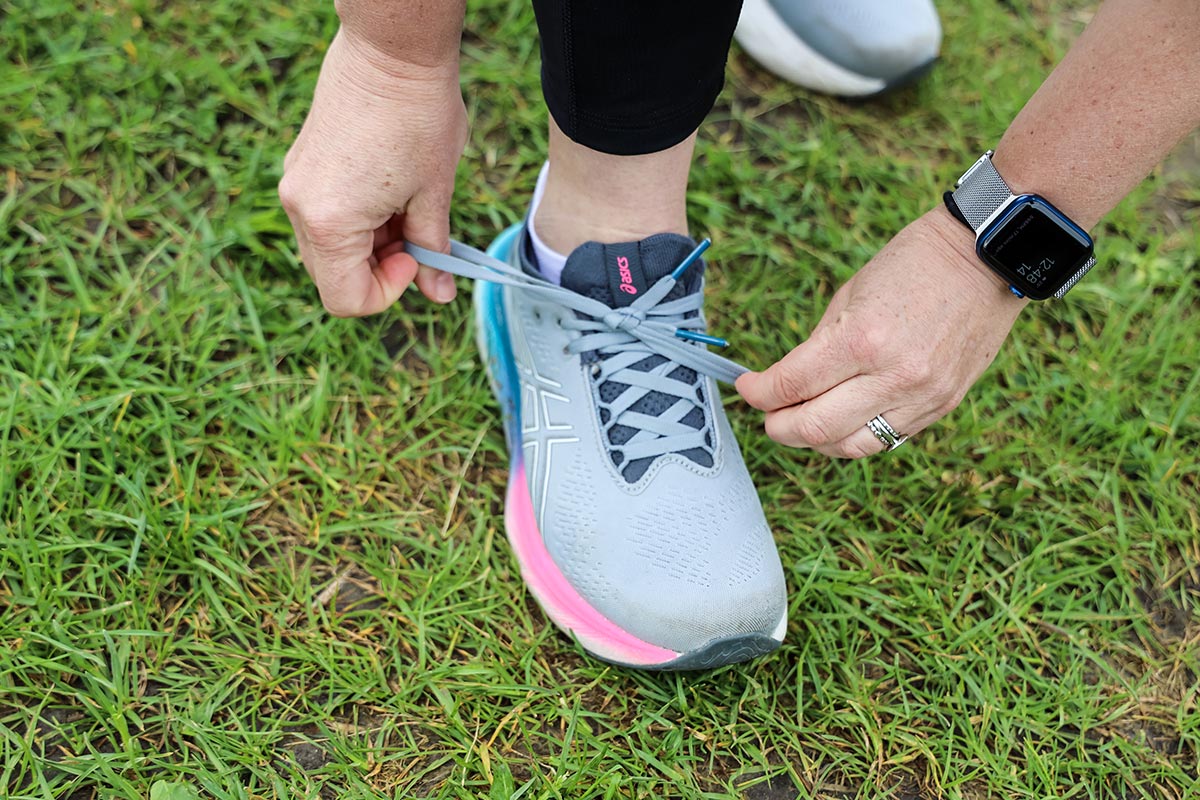
Strengthening Brain Cognition Through Running
Kim Hellemans, a professor in Carleton’s Department of Neuroscience, explains that running, and other aerobic activities, can improve brain health and mental well-being. As a runner and co-host of the award-winning podcast Minding the Brain, Hellemans shares the science of what happens in our heads when we run.
“Every time you’re engaging in an aerobic activity, you’re getting the upregulation of glucose, oxygen, and growth factor proteins that are the building blocks of brain cells,” she says.
“That’s promoting a healthy brain.”

Carleton University professors Kim Hellemans and Francine Darroch
What about that runner’s high? Research in mice and marathon runners has identified increases of endorphins, while exercise may also increase the release of endocannabinoids – a natural substance found in the body that mimics the effect of main ingredient of cannabis.
“When you run, your body is getting all these feel-good hormones,” says Hellemans.
The benefits of running go beyond its mood-boosting abilities. Studies indicate that exercise can have an impact in the classroom, helping students with academic achievement.
“Research has shown that kids and young adults that engage in regular aerobic activity actually perform higher on educational measures, like standardized tests that look at math and literacy skills.”
Keeping active is important for all age groups. In fact, the cognitive benefits of running can take root in middle age to guard against future memory loss.
“One of the best predictors of later life dementia is whether or not an individual has engaged in regular aerobic exercise during their middle age period,” says Hellemans. “It’s a lifestyle factor that’s protective.”
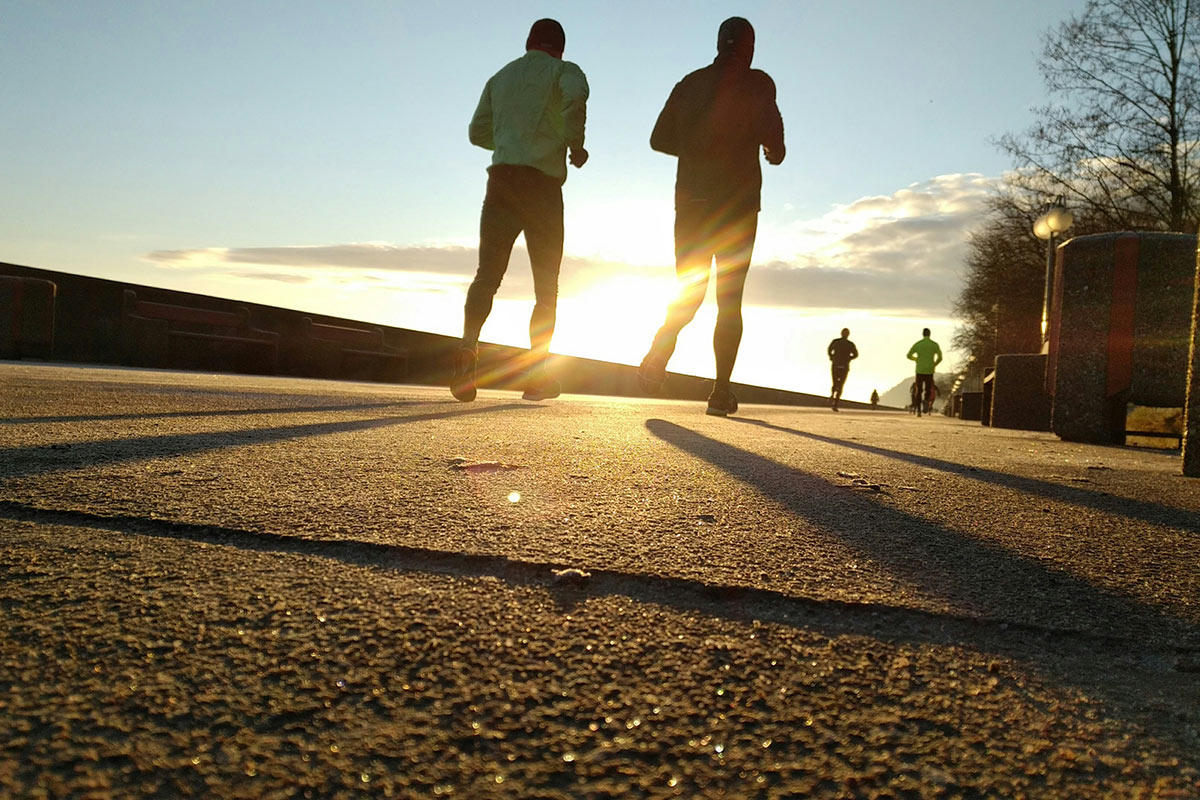
Physical Activity and Mental Health Management
Hellemans’ research is focused on student mental health, cannabis use and social media. She sees running as a great tool for students to help manage their mental health and life stressors.
“Running in particular, and aerobic exercise more generally, does influence mood states and we know students are a population where they are facing regular stressors,” she says.
“This is not something that they can avoid, although they may try to with social media and substance use.”
While she clarifies that aerobic activity is not an appropriate treatment of severe mental health conditions, exercise has been shown to protect against and reduce symptoms of mild to moderate depression and anxiety.
“It can protect against the onset of mental health problems, reduces some of the symptoms of mild to moderate depression and aids in stress regulation.”
As the Associate Dean of Science (Student Recruitment, Wellness and Success), Hellemans commends the Carleton Science Student Society for organizing a weekly run as a wellness initiative.
“Social support is one of the most beneficial elements to buffer against the impact of day-to-day stressors,” says Hellemans.
“In the case of group running, there’s lots of data from psychological literature that shows people are more likely to maintain exercise if it’s in a group activity. They’re more likely to report increased motivation and therefore are more likely to have adherence for the long term.
“It’s a win-win-win.”
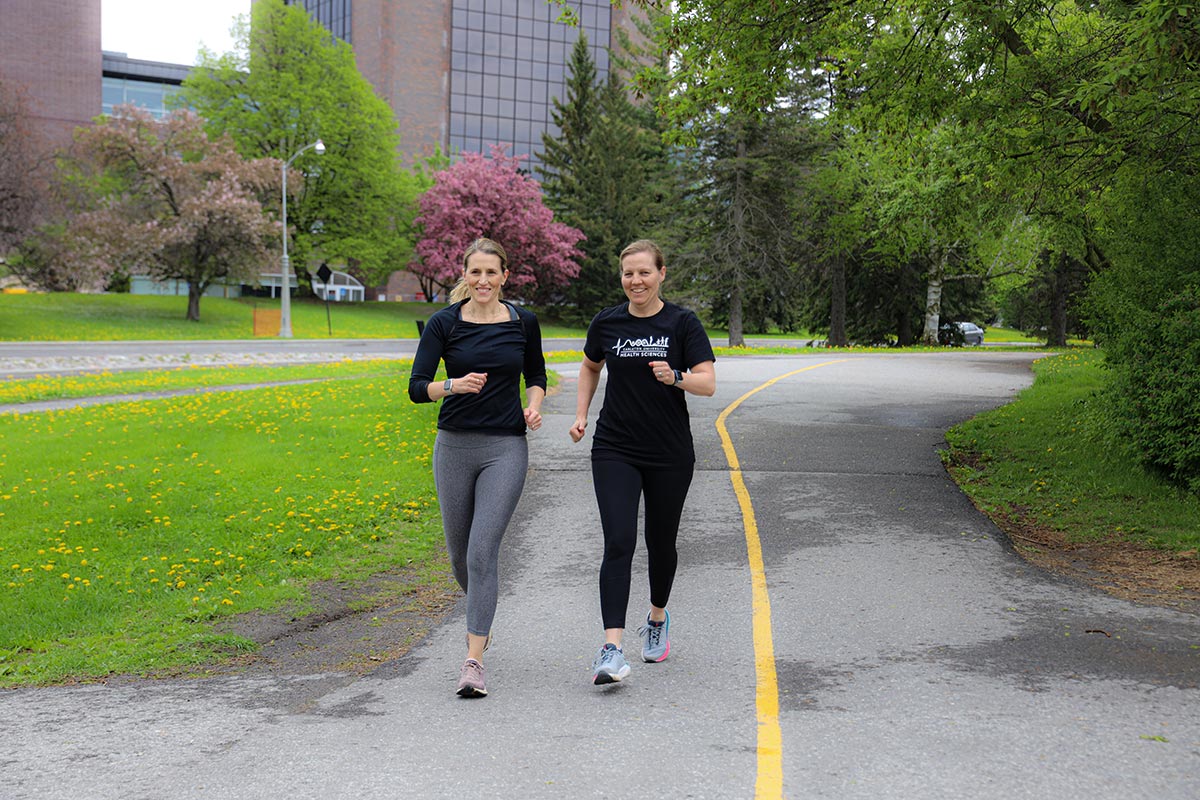
Equity, Inclusion and Physical Activity
To ensure that everyone can enjoy these mental health benefits, inclusivity is important.
An ongoing research project by Francine Darroch, a professor in Carleton’s Department of Health Sciences, aims to address inequities in physical activity for women and families. Funded through Public Health Agency of Canada, the program offers trauma- and violence-informed group exercise activities and operates in 4 sites across Vancouver, Ottawa and Toronto.
“When people experience trauma, they can become very disconnected from their bodies,” says Darroch, explaining that the same body responses to physical activity – such as increased heart rate – can also take place during traumatic events. This can lead to survivors avoiding physical activity despite its health benefits.
The program provides opportunities for women who have experienced trauma to be active in a space that is comfortable for them.
“The women are able to take part in moderate to vigorous physical activity in an environment where they are in control and feel safe,” says Darroch.
“They can learn to reexperience the stress that’s coming from their body, but it’s a controlled stress.”
The project addresses barriers faced by these women by providing childcare, athletic apparel, shoes and accounting for participants’ privacy concerns.
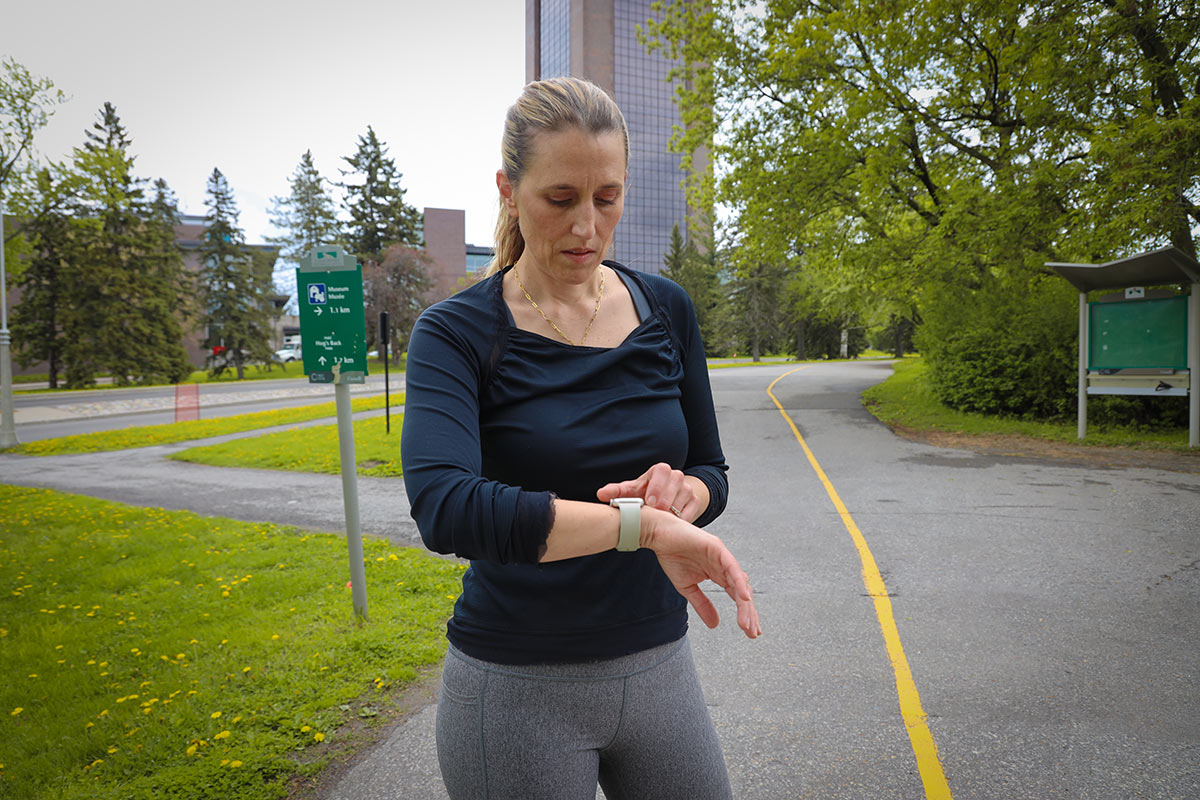
Building Healthy Communities
The collaborative nature of group excise creates a supportive environment.
“An important outcome in our research is seeing increases in social connection and community cohesion,” says Darroch.
“If you are in a in a room with people who have some shared experience with you, or are part of the same community, there’s a benefit in that.”
As many of the participants are mothers, healthy habits are being passed down to the next generation. A youth running group has been created as part of the project’s childcare program, with the junior runners taking part in Tamarack Ottawa Race Weekend’s 1.2KM Kids Marathon.
Working with trauma-informed community advisors, the project gathers feedback from participants on how they feel before and after group exercise.
“Our biggest outcome is improved mood, 97 per cent of participants report feeling much better after taking part in physical activity programming,” says Darroch.
“This research helps provide the evidence base needed to advocate for long-term and sustainable programming because we’re seeing huge benefits for the women participating.”
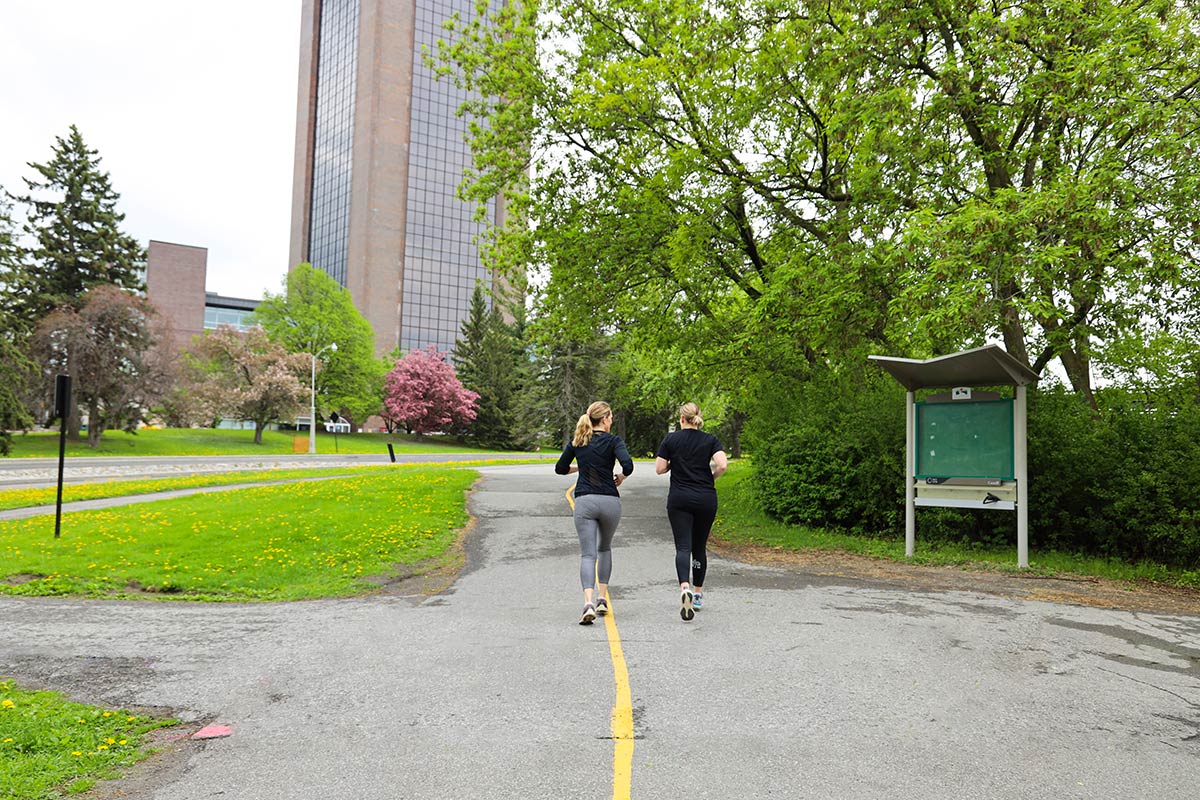
Second wide photo by Huckster / Unsplash
Thursday, May 16, 2024 in Athletics, Cognitive Science, Mental Health
Share: Twitter, Facebook



